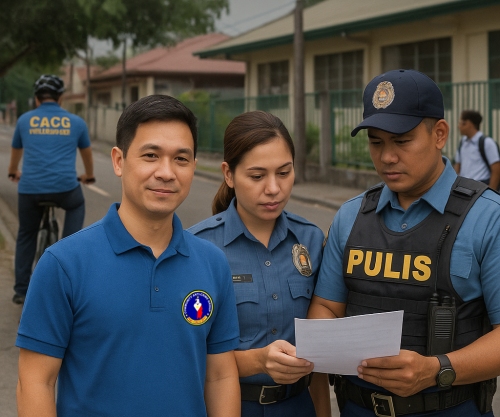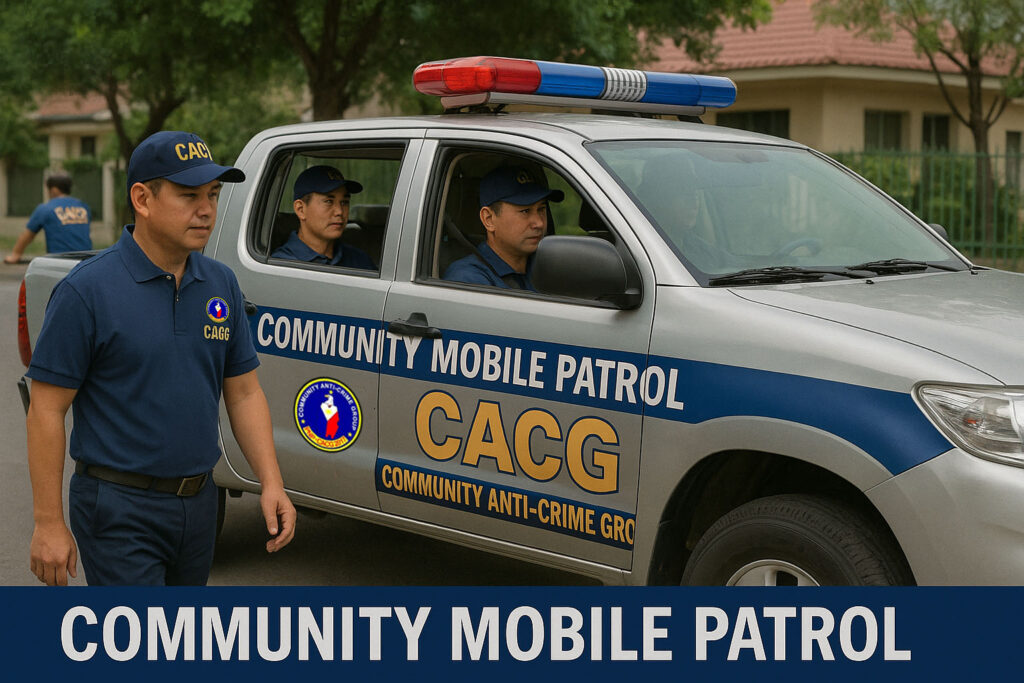In the battle against crime, one of the most effective strategies lies in active prevention. The Crime Prevention and Patrol Activities spearheaded by the Community Anti-Crime Group (CACG) aim to create a safer, more secure environment for communities, particularly in Barangays. Through various types of patrols and neighborhood watch initiatives, CACG volunteers play an instrumental role in supporting the Philippine National Police (PNP) and fostering a collective sense of responsibility among residents. Let’s dive into the key activities CACG is involved in to ensure the safety and well-being of their communities.
Types of Patrols Conducted by CACG and Their Impact
Patrols form the backbone of crime prevention efforts in any community. CACG utilizes a range of patrol strategies designed to cover different aspects of neighborhood safety. These patrols are not just about visibility; they play an active role in deterring criminal activities and providing immediate responses to emergencies. The following are the primary types of patrols conducted by CACG:
1. Foot Patrols
Foot patrols are a tried and true method for building strong community relationships while ensuring law and order. In this type of patrol, CACG volunteers move through neighborhoods on foot, engaging directly with residents and observing any unusual activities. The personal presence of patrollers encourages trust and open communication with the public, making it easier for residents to report concerns or suspicious behavior. Foot patrols are particularly effective in areas where crime tends to be opportunistic, such as near schools, markets, and parks.
Impact: The increased physical presence of patrol units helps reduce petty crime, such as theft, drug abuse, and street fights. Residents feel safer and more connected to their community when they see uniformed individuals regularly monitoring their surroundings.


2. Mobile Patrols
Mobile patrols extend the reach of foot patrols by allowing CACG volunteers to cover larger areas quickly. Volunteers travel by motorcycle or car, monitoring various parts of the barangay. Mobile patrols are particularly useful for tracking suspicious vehicles, ensuring that roads and highways remain safe, and providing quick response capabilities in the event of an emergency.
Impact: Mobile patrols can act as a deterrent to crime by creating a constant, unpredictable presence across a wide area. They provide quick intervention in cases of traffic violations, accidents, or criminal incidents that require immediate attention.
3. School Watch
As the safety of children is of utmost importance, CACG also focuses on school watch activities. Volunteers are assigned to schools, especially during peak hours when students are arriving or leaving. Their primary role is to prevent any potential crimes like bullying, drug peddling, and theft from occurring near school premises.
Impact: School watch programs contribute to a safer environment for students, making parents and teachers feel more confident about their children’s well-being. They also help instill the values of responsibility and discipline in young people by showing them the importance of law enforcement.

Neighborhood Watch: How CACG Supports Barangay Security
Neighborhood watch programs are an essential aspect of crime prevention. CACG actively supports these initiatives by working closely with the residents of each barangay. By establishing a solid communication network, CACG helps create vigilant and engaged communities where everyone shares the responsibility of watching out for one another.
Role of CACG in Watching Out for Suspicious Activity
One of the core responsibilities of CACG in neighborhood watch programs is to be the “eyes and ears” of the community. CACG volunteers are trained to spot signs of suspicious activity and report these concerns to local authorities promptly. Whether it is someone loitering around a closed business or a car parked in an unusual location, CACG members are vigilant in ensuring that no criminal behavior goes unnoticed.
Impact: A well-established neighborhood watch program fosters community collaboration. Residents feel empowered to take an active role in maintaining their security, and this collective approach makes it difficult for criminals to operate undetected.
Coordinating with the Police
CACG works in close coordination with the PNP to provide real-time intelligence and enhance the efficiency of crime reporting. CACG members not only report suspicious activities but also assist the police by gathering and documenting information that may be crucial in solving cases. Their relationship with local authorities ensures that both sides can work seamlessly together to combat crime and improve public safety.
Impact: This close partnership between CACG and the PNP creates a more efficient and unified approach to crime prevention, resulting in quicker response times and more effective law enforcement.
Coordination with the PNP During Events and Emergencies
CACG’s role extends beyond regular patrols to include active participation in events and emergencies. Whether it’s a local fiesta, rally, or disaster response operation, CACG volunteers are on hand to provide crucial support to the PNP and other emergency services.
How CACG Volunteers Help During Calamities
In times of natural disasters, CACG volunteers play a vital role in ensuring the safety of communities. From floods to earthquakes, these volunteers assist with evacuations, help distribute relief goods, and even set up emergency shelters. They also work closely with the PNP and other disaster management teams to facilitate rescue operations and ensure the proper distribution of aid.
Impact: During calamities, CACG’s presence ensures that local communities receive the help they need promptly. Their swift response minimizes risks to life and property while ensuring the smooth operation of relief efforts.
Supporting Rallies, Festivals, and Large Gatherings
Events like rallies, festivals, and public celebrations often attract large crowds, which can pose safety challenges. CACG works in coordination with the PNP to help manage crowds, provide crowd control, and ensure that events proceed without incident. Volunteers are trained to spot potential threats, manage the logistics of large crowds, and intervene if any criminal activity occurs.
Impact: CACG’s involvement in these events enhances the safety and security of participants. Their presence helps mitigate potential risks, such as pickpocketing, crowd violence, and other forms of disruption.
Conclusion
The Crime Prevention and Patrol Activities of CACG significantly impact community safety, fostering a culture of vigilance, collaboration, and responsiveness. Whether it’s through foot patrols, mobile patrols, or school watch programs, CACG ensures that communities remain safe and secure. Their role in neighborhood watch programs and coordination with the PNP further strengthens local security efforts. Additionally, CACG’s involvement in disaster response and event management showcases their versatility and dedication to protecting the public in times of need. By working hand in hand with local authorities, CACG continues to contribute to the development of drug-free, crime-free, and disaster-resilient barangays across the Philippines.






 then choose "Install".
then choose "Install".